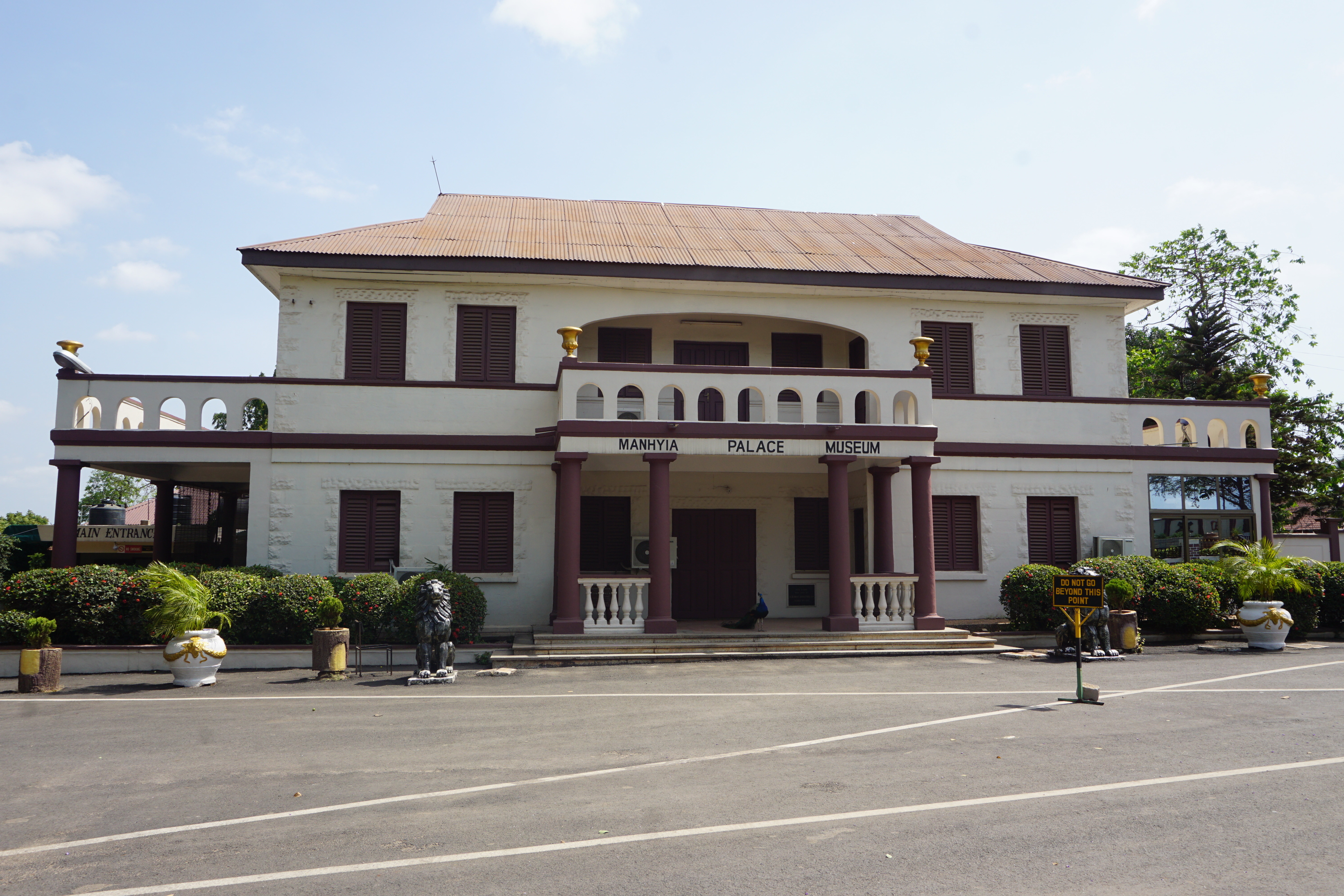I awoke bright and early in my Kumasi, Ghana accommodations, then ate a quick breakfast of oatmeal (sans milk) at the hotel dining room at the Noda Hotel (Noda Hotel restaurant).
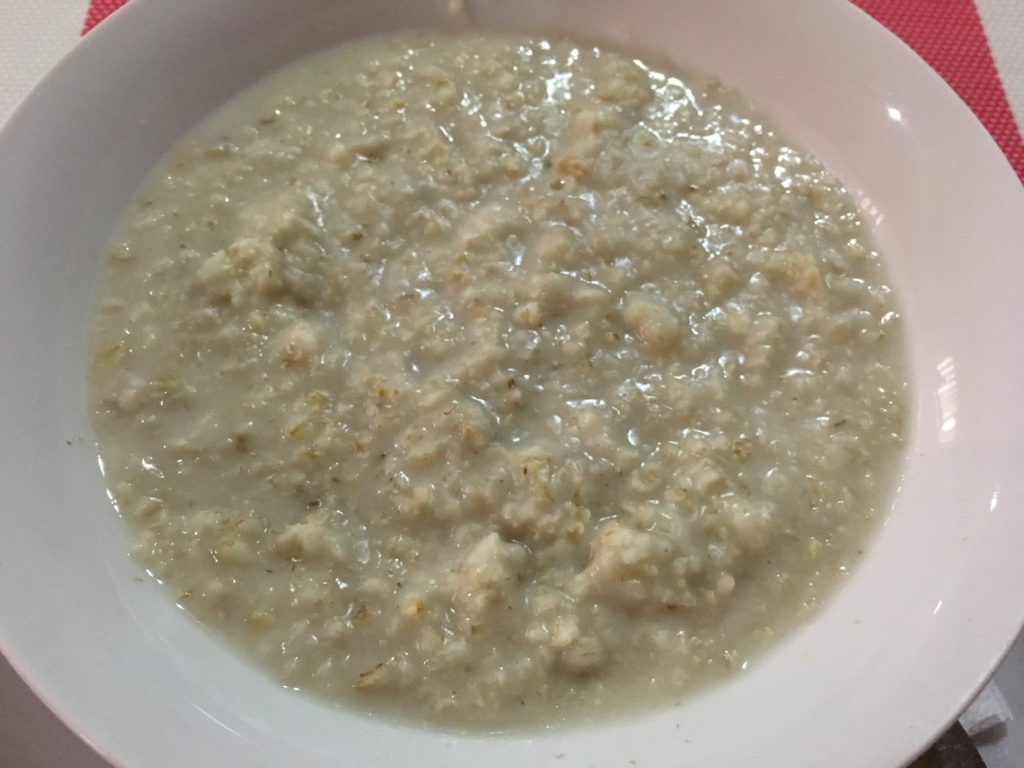
When my tour guide arrived, he pointed out a local Ashanti chief and some of his community who had arrived for a meeting within my hotel. The chief typically dresses in a vibrant blue pattern robe; the color of royalty.
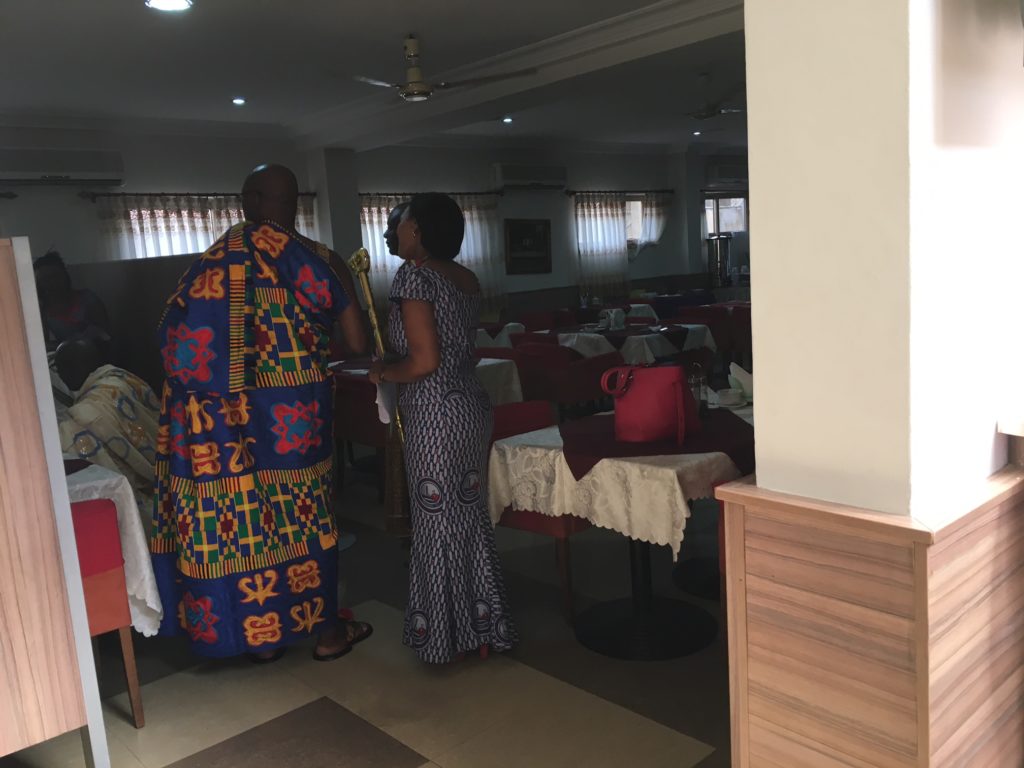
I was delighted to watch the procession of chief and tribe, as they strolled by the hotel lobby across the outdoor pool area to their meeting room.
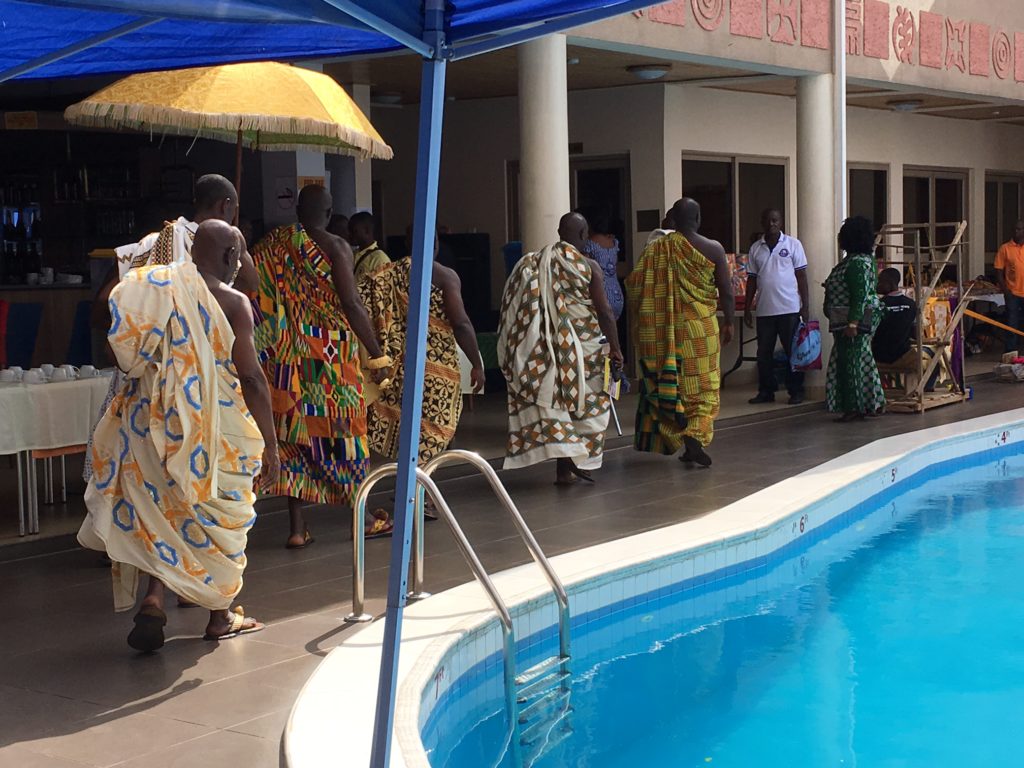
A traditional drumming group performed for this special occasion.
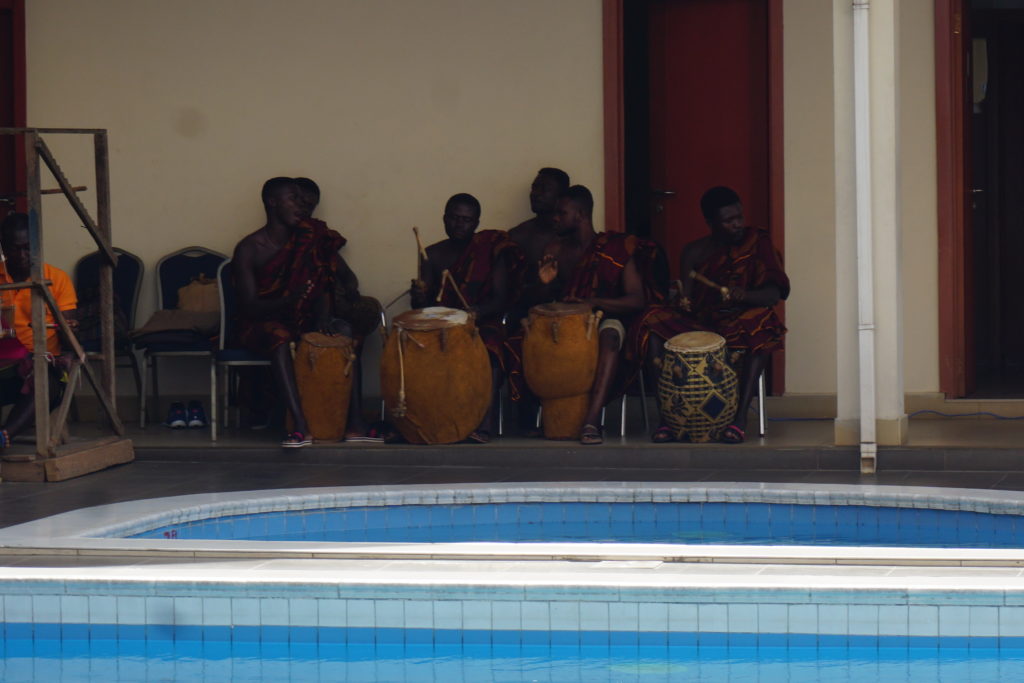
As I boarded the tour van, my guide informed me of the day’s itinerary. Our first destination was the Manhyia Palace Museum in Kumasi. British troops destroyed the original palace building after the third Anglo-Ashanti War in 1874. The British commander sought the Ashanti “Golden Stool”(i.e. “throne”), upon which the king ruled his kingdom. Thus the wars began. It was originally the residence of Otumfuo Agyeman Prempeh I and Otumfuo Sir Osei Agyeman Prempeh II, the thirteenth and fourteenth Kings of Ashanti. This newer palace was built in 1925 when Prempeh 1 returned to Ghana after 28 years of exile in Seychelles. The building was opened in 1995 as a museum to recognize the history of the Ashanti Kingdom.
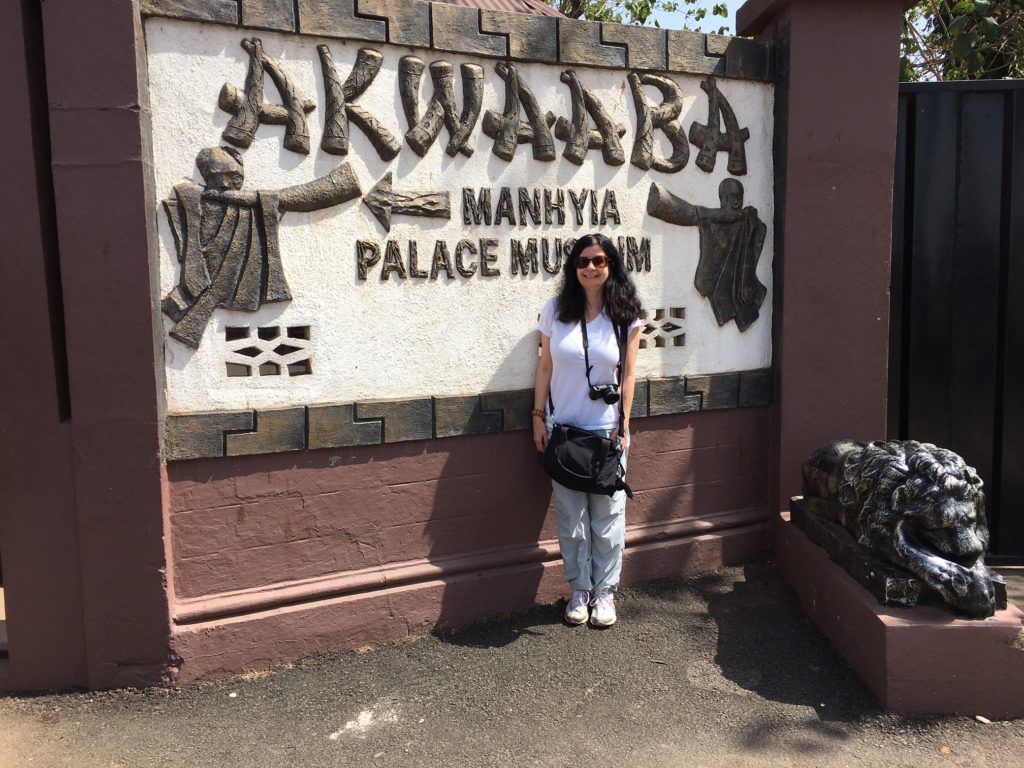
Lifesize effigies of Prempeh 1, Prempeh 2, and their queens occupy a section of the museum. First floor memorabilia serve as a remembrance of the life and service of Otumfuo Agyeman Prempeh II. Photos of important events in Ashanti history reside on this level. An effigy of Nana Yaa Asantewaa, Queen of Ejisu, is also housed here. She led the uprising in the wars between the Ashanti and the British in the year 1900. The king’s original furniture sits on this level of the palace. Gold weights, bracelets, and carrying pots are displayed within a glass case on the upper level, as representations of the gold craftsmanship for which the Ashanti are known. Visitors are not permitted to take photos within the museum building.
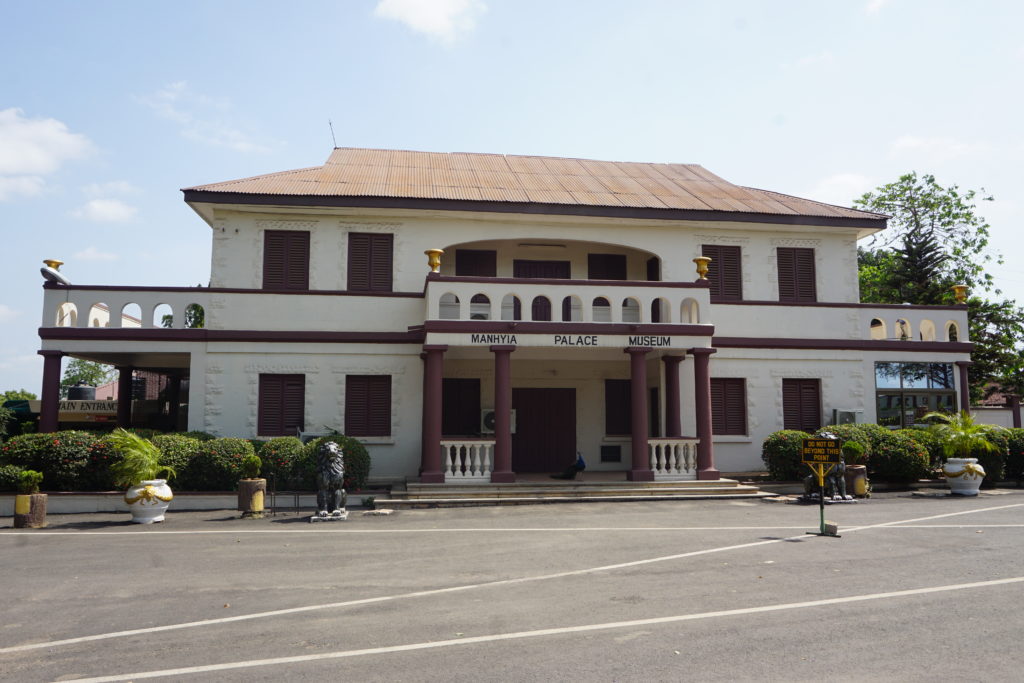
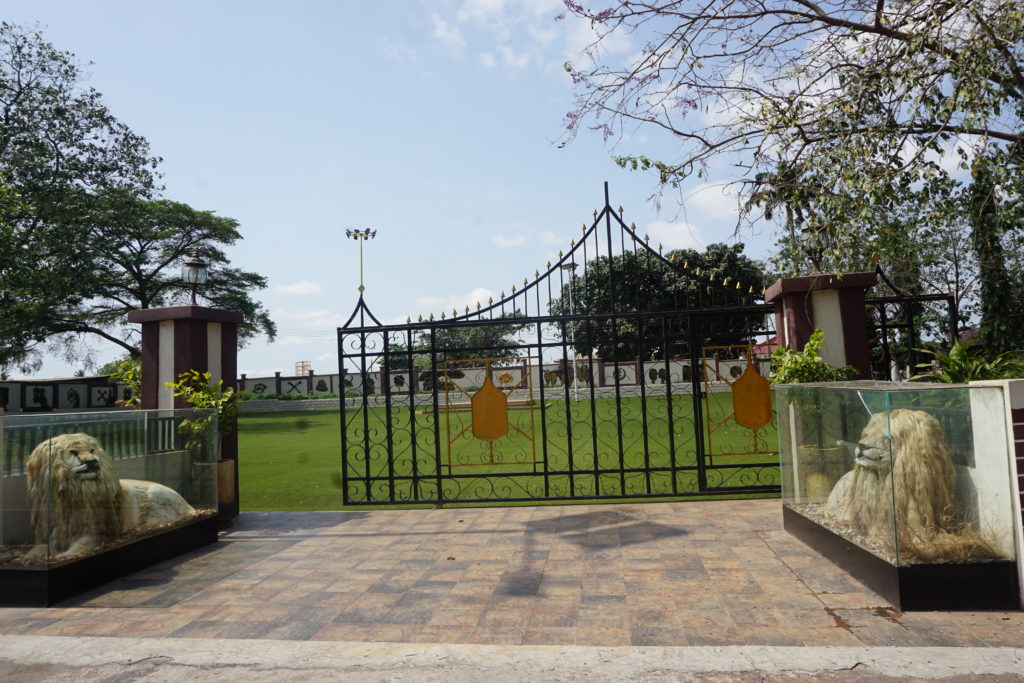
Upon exiting the tour, I noticed several radiant peacocks strolling along the pathways surrounding the palace.
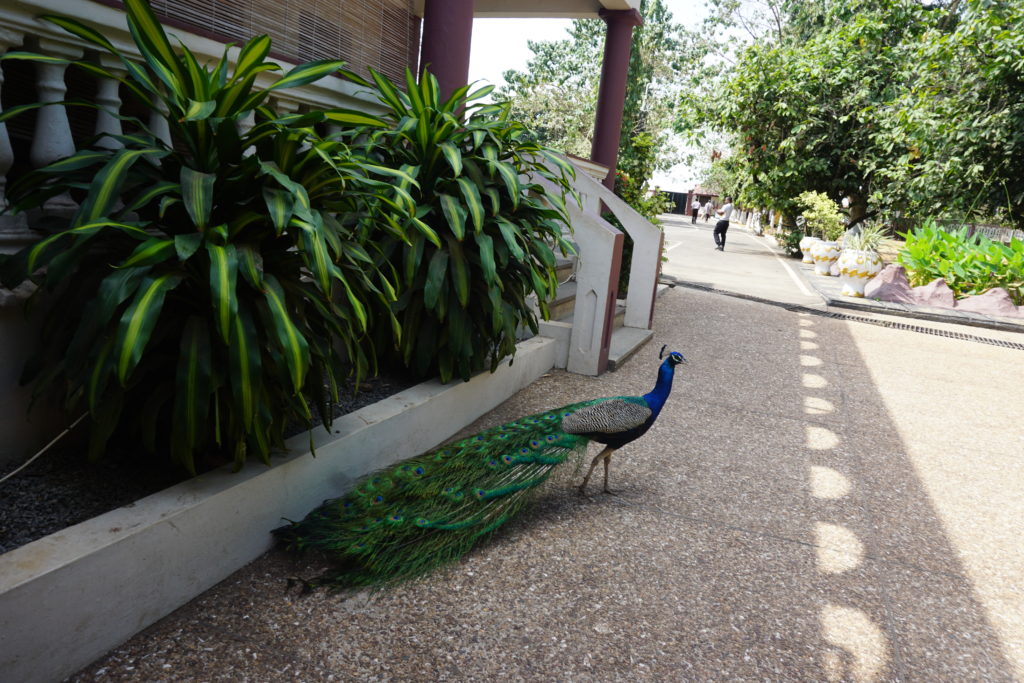
Next on the day’s itinerary was a visit to Kumasi’s Kejetia Market. This is the largest open-air market in West Africa. Shoppers can find over 45,000 stalls and shops here. Whether it is Kente cloth, shoes, jewelry, skincare, housewares, or spices; Kejetia offers many goods for purchase. Due to safety concerns of picket-pocketing, my guide suggested that we only walk by the outer perimeter of the market to experience its bustling atmosphere. He then brought me to a second level balcony, as a safe overlook to photograph the enormous market territory below.
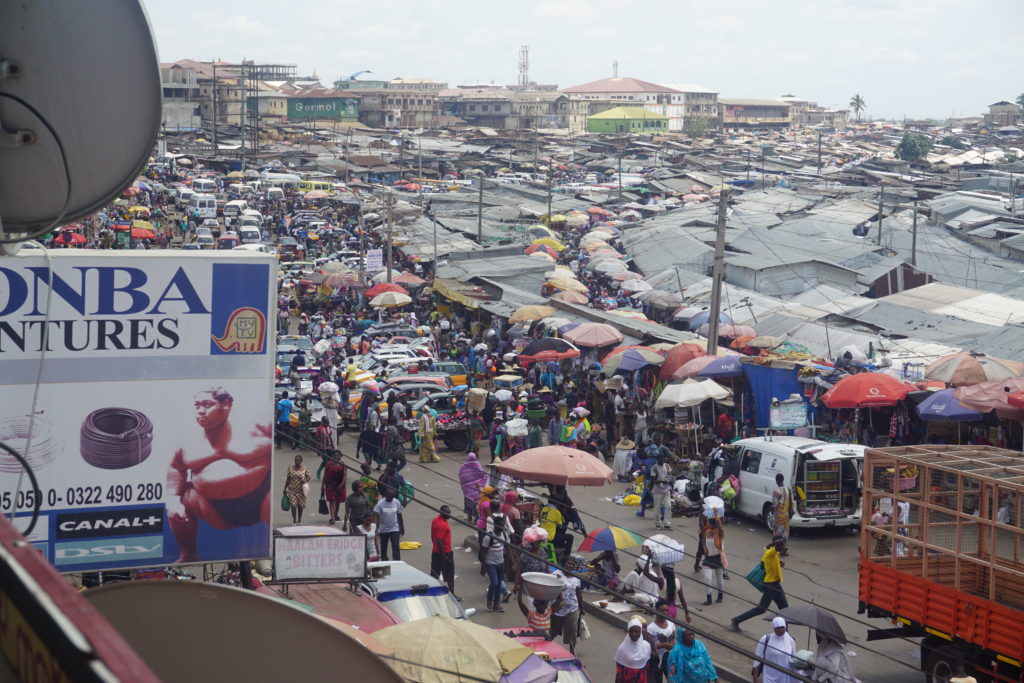
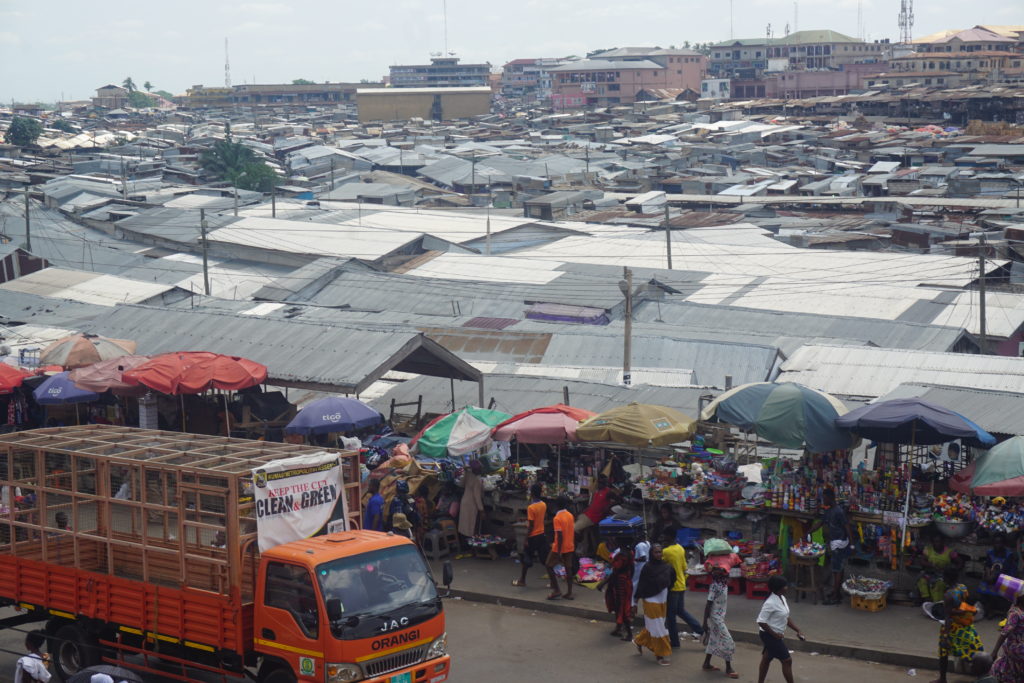
We arrived shortly thereafter at the Okomfo Anokye Sword Museum in Kumasi. Okomfo Anokye was a tribal priest born in eastern Ghana during the late 17th century. He is rumored to have summoned the “Golden Stool” from the sky. According to legend, He thrust his sword into the ground to mark the location of the capital city of Kumasi, unifying the Akan tribal territories. Ghanaians honor this spot as a venerated shrine. The sword remains in this same location in the ground. Many attempts have been made to remove it. However, it remains unmovable, just as Anokye declared it would be.
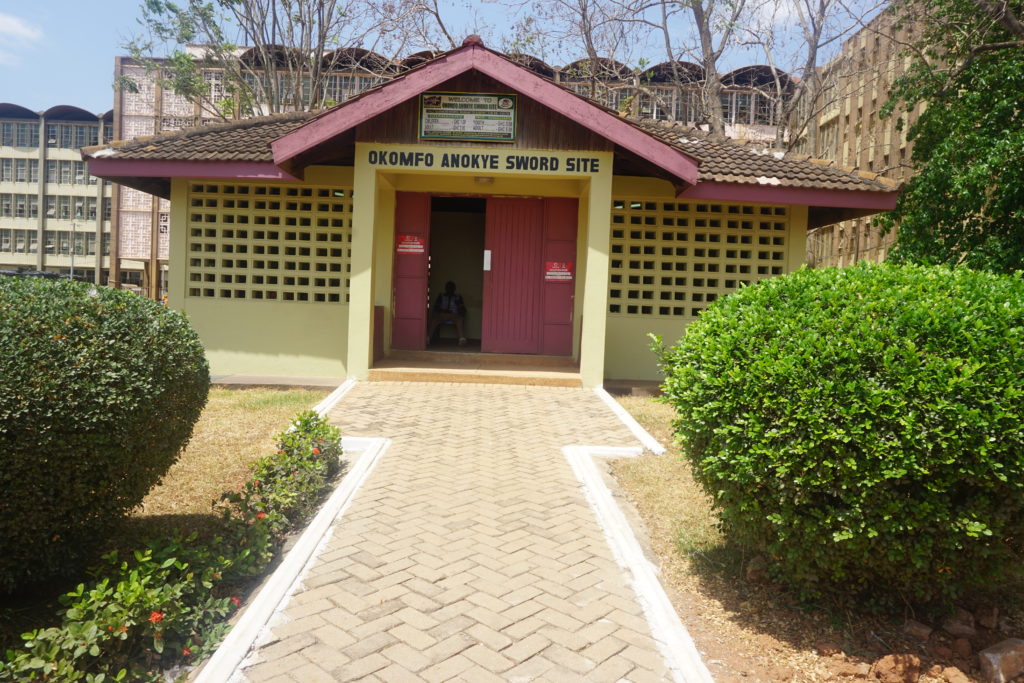
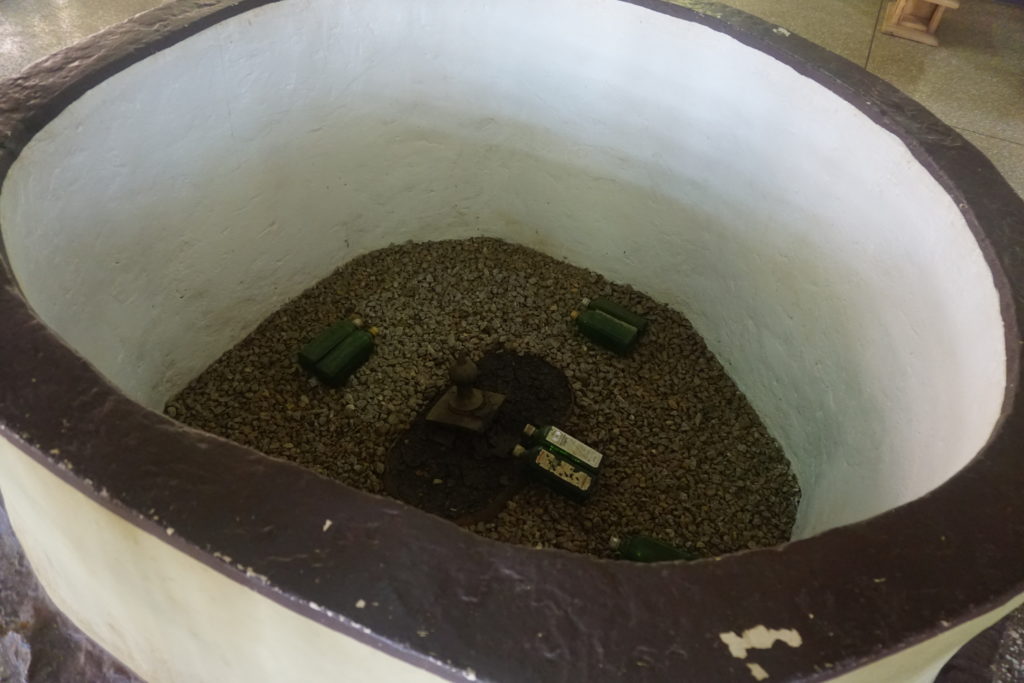
I was struck by the poverty we encountered, even here in a main city. Many wooden shack houses border the area near the sword museum. Women walk within their neighborhood, carrying groceries and other goods upon their heads.
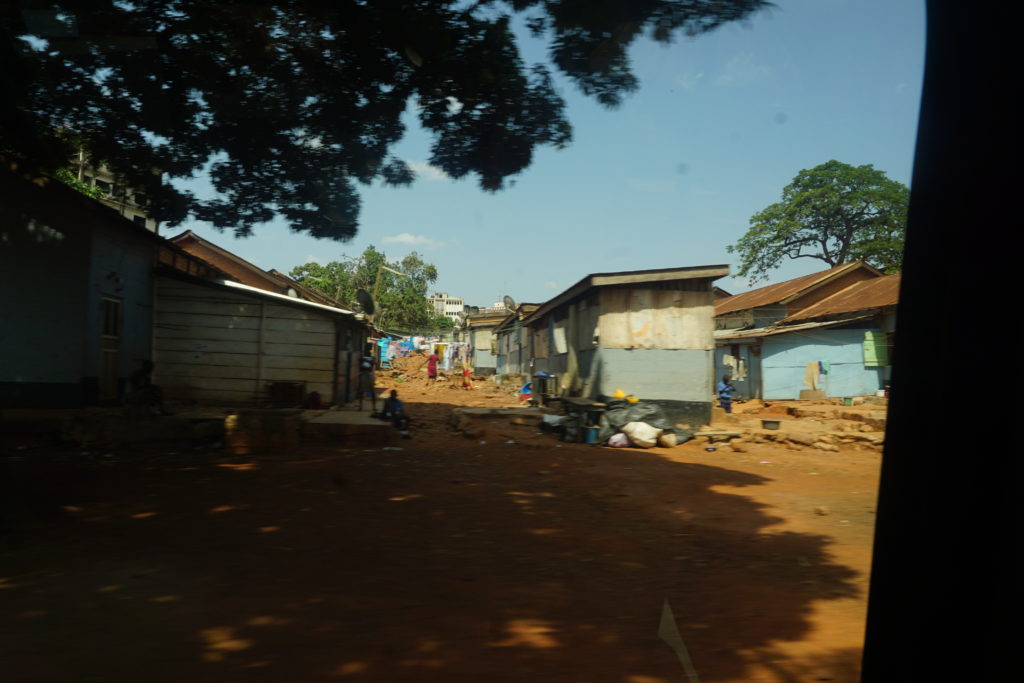
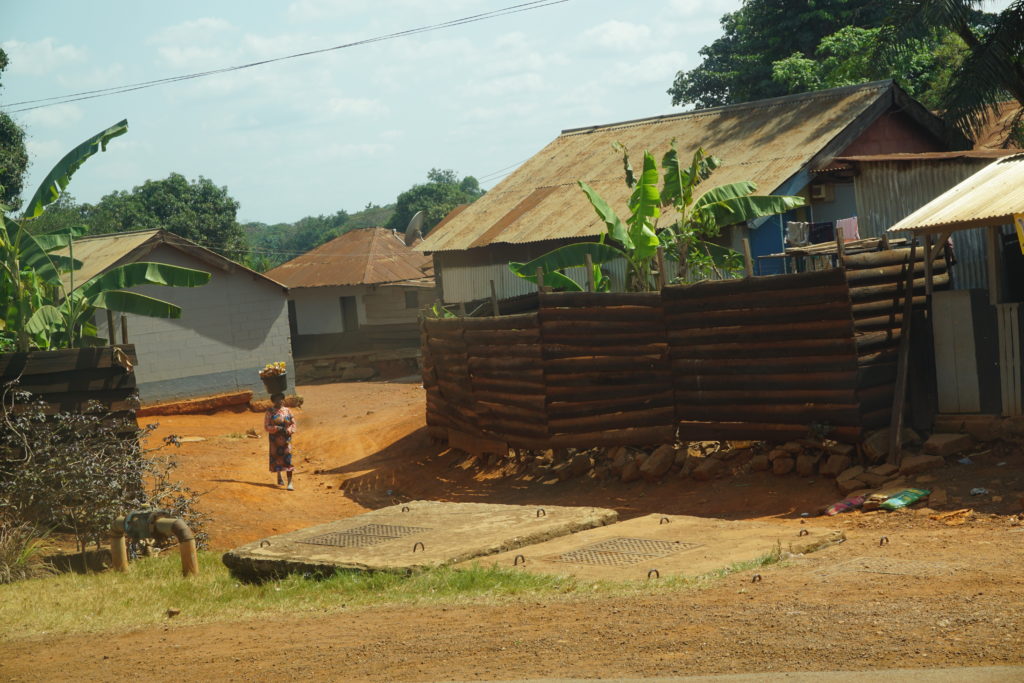
Before my final museum tour of the day, we made a lunch stop at Kentish Kitchen Restaurant, located within the National Cultural Center in Kumasi (Kentish Kitchen Restaurant). They specialize in healthy cooking. My guide knew the owner and asked if she could prepare a vegan meal for me. I requested the traditional Ghanaian dish called “Red Red”. This dish is made with black eyed peas cooked in palm oil and a side of plantain. Local mushrooms were added to the entree, per the owner’s recommendation. Palm oil’s red color gives the meal its name. I really enjoyed my delicious lunch.
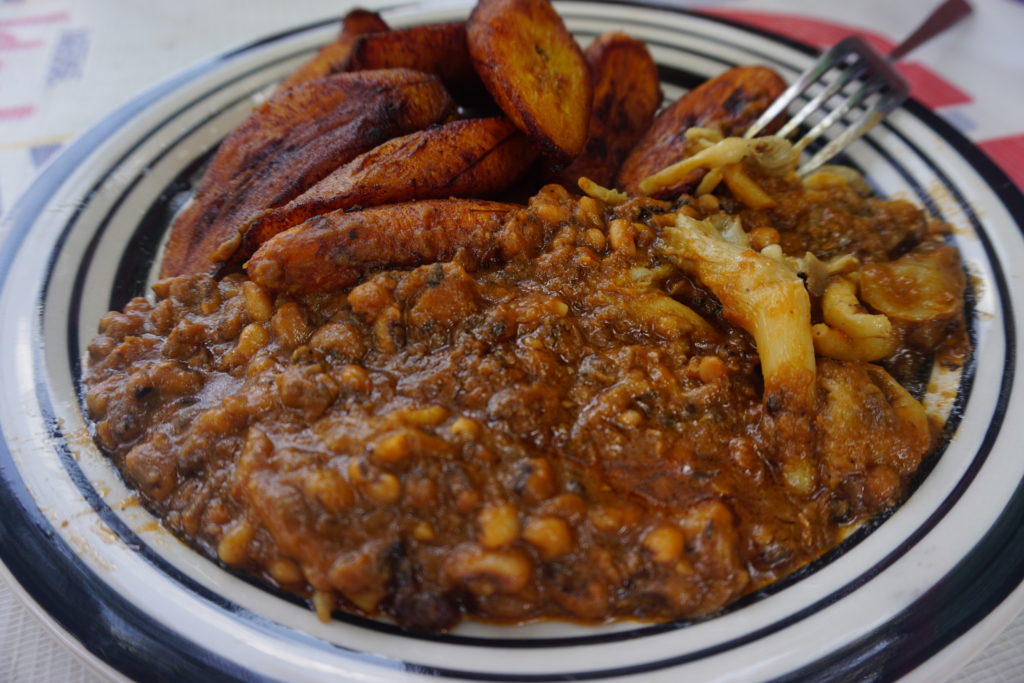
My guide and I finished eating and headed over to the Prempeh II Jubilee Museum, located across the street from the restaurant.
A guided tour is provided with admission. The small museum contains many possessions of King Prempeh II, such as ceremonial and war clothing, jewelry, amulets, and furniture. Among the museum’s contents are a photo of the original “Golden Stool” and the fake stool that was given to the British in 1900.
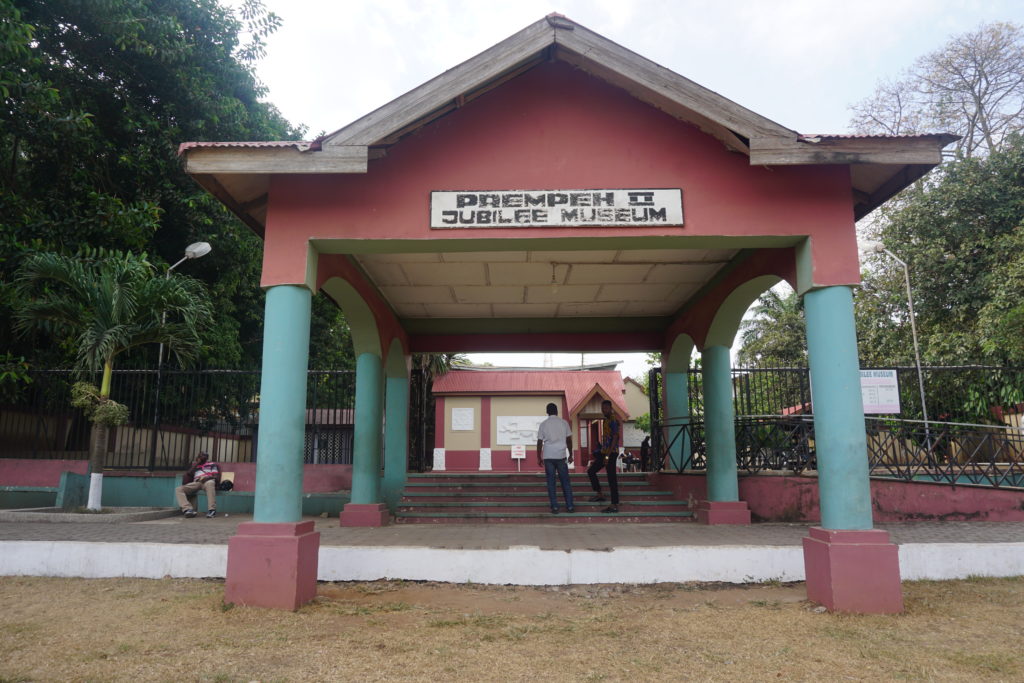
A lifelike statue of King Prempeh II stands before the museum’s entrance gate.
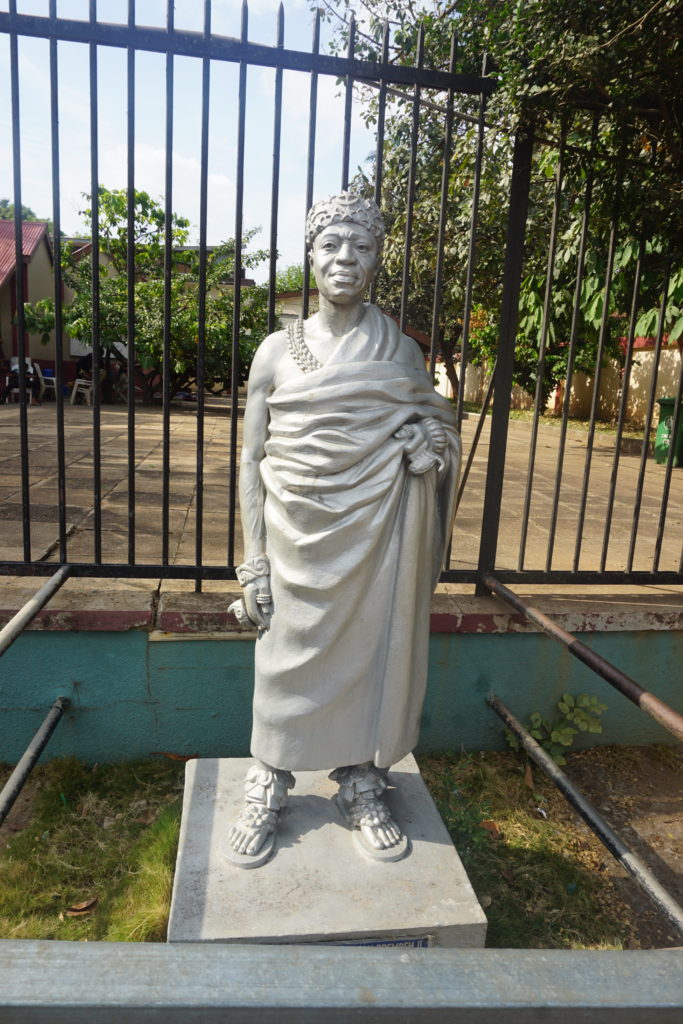
Across the road, I perused the museum artisan’s shop for some sounvenirs. My purchases included the local glass bead necklace and bracelet.
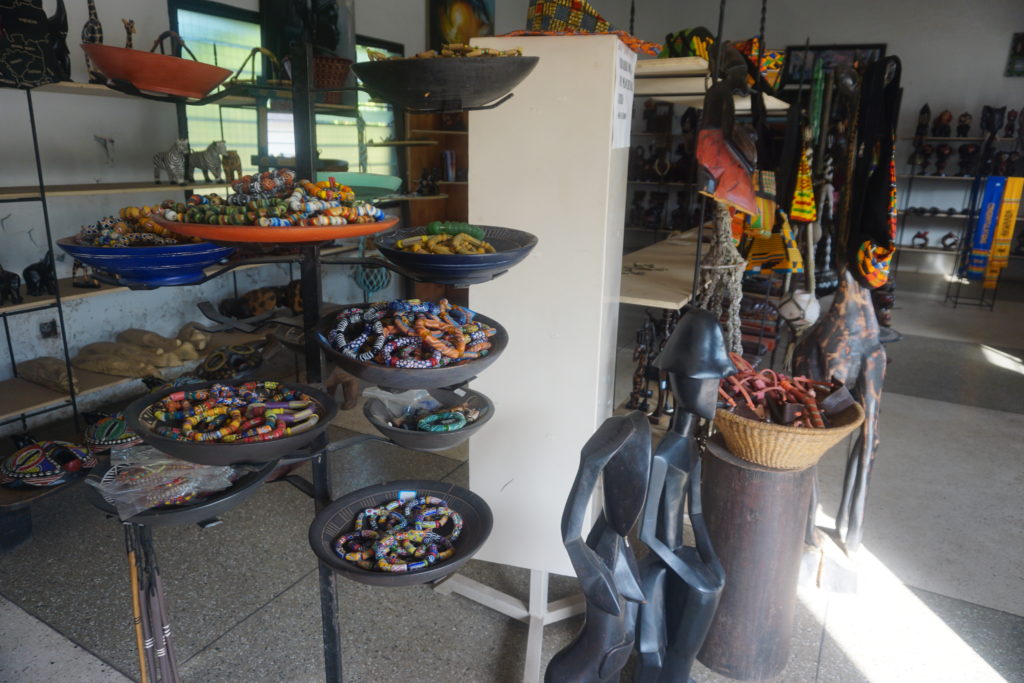
My day tour had completed and we drove back to Hotel Noda for the evening. Dinner time had arrived. I opted for a vegetable curry with green peppers, tomatoes, carrots, onions, and mushrooms. A side of rice accompanied my flavorful meal. Hotels appear to be very accomodating when requesting vegan options.
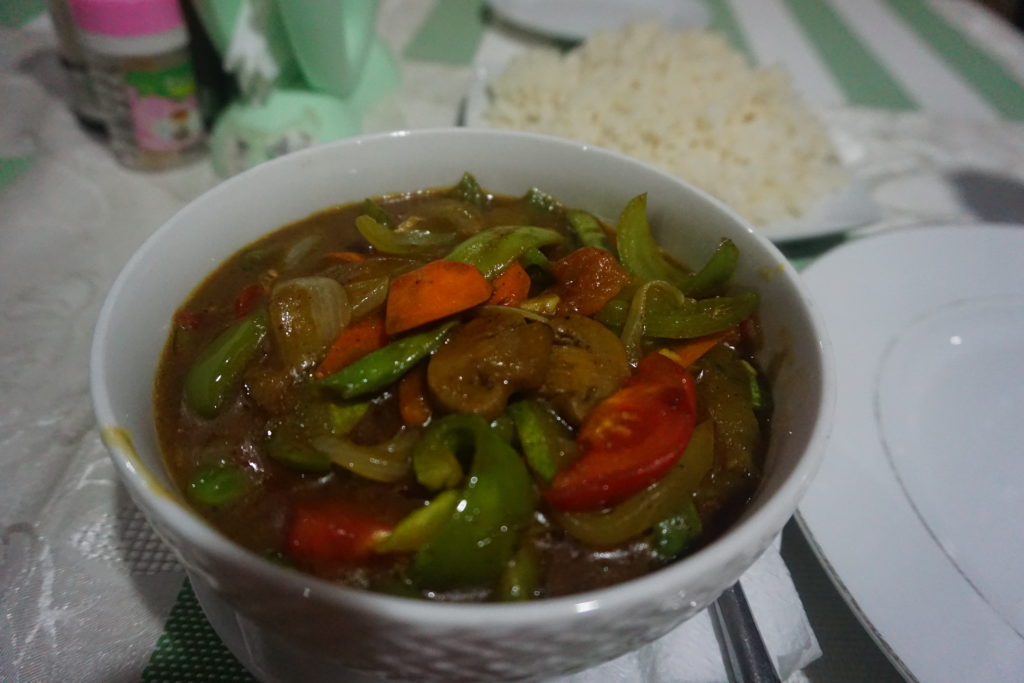
The day’s itinerary was fascinating. From my exploration of the Ashanti Kingdom to the tasty vegan meals, I enjoyed my visit to the Kumasi region. I anticipated the following day’s journey to delve into the Cape Coast region’s fort and castle history.
